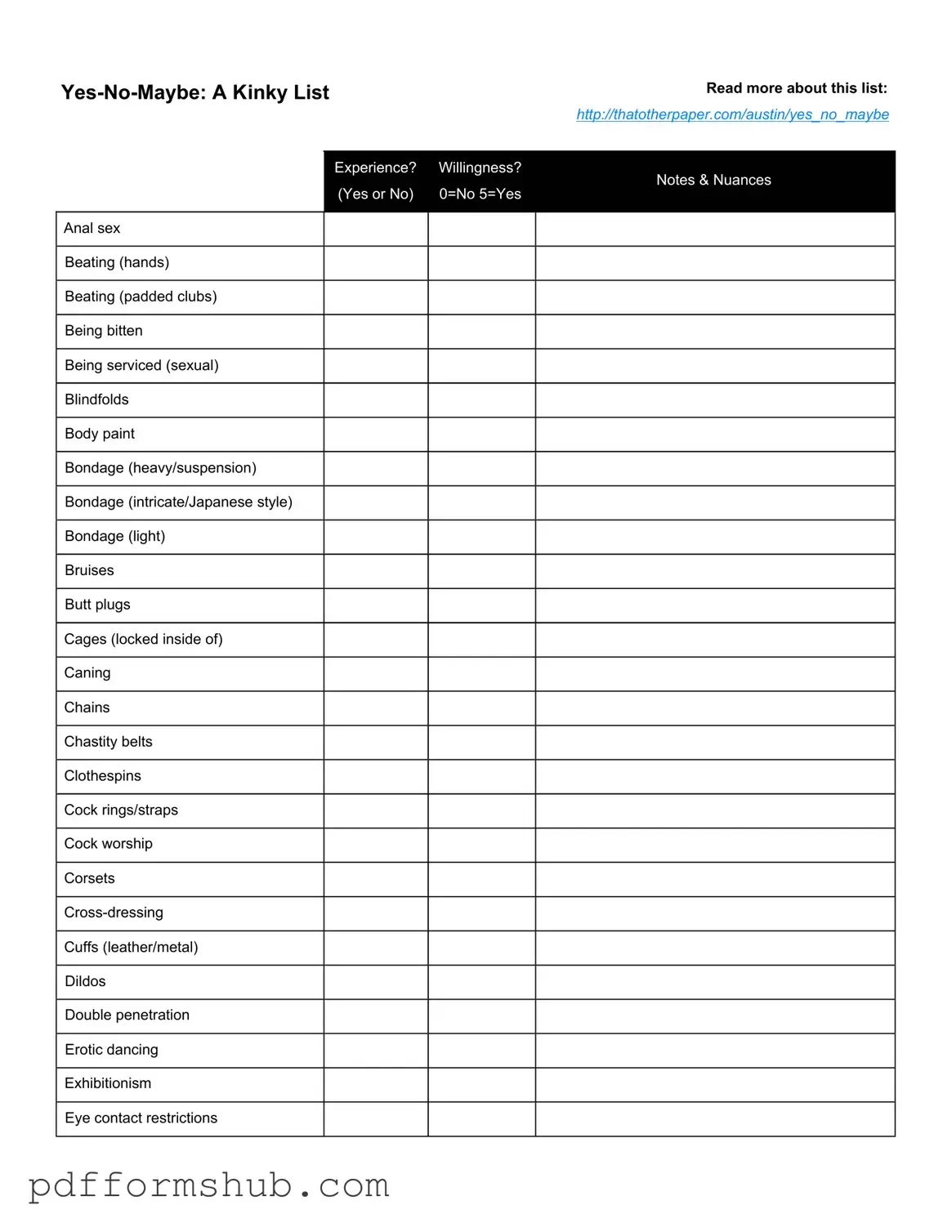The Yes No Maybe List form serves as a valuable tool for individuals exploring their desires and boundaries within the realm of kink and sexual experiences. This comprehensive checklist allows participants to communicate their preferences regarding various activities, ranging from the more common practices like oral and anal sex to more specialized interests such as bondage, spanking, and fetish play. Each item on the list includes a rating system from 0 to 5, where 0 indicates a firm "no," and 5 signifies a strong "yes," helping to clarify levels of comfort and willingness. Additionally, the form encourages users to note nuances or specific conditions that might apply to their preferences. By addressing a wide array of activities—such as foot worship, role-playing, and the use of toys—this list not only fosters open dialogue between partners but also promotes a safer and more consensual exploration of their shared interests. Understanding one another’s limits and desires can lead to a more fulfilling and respectful experience, making the Yes No Maybe List an essential resource for anyone looking to navigate the complex landscape of kink with confidence and care.
